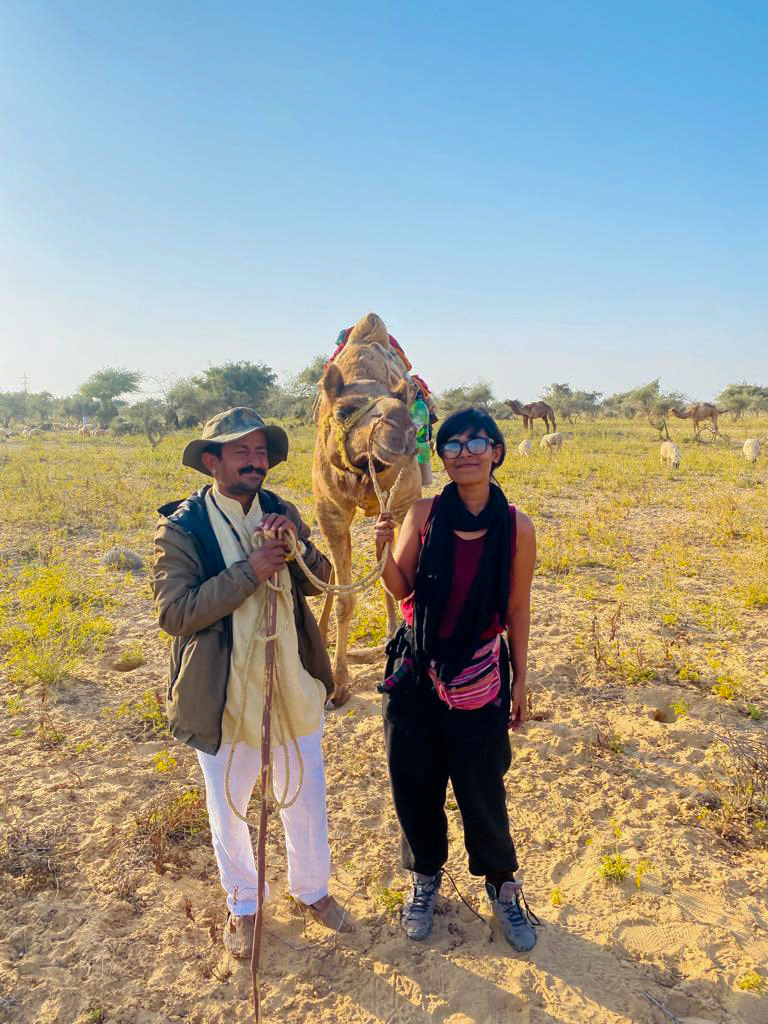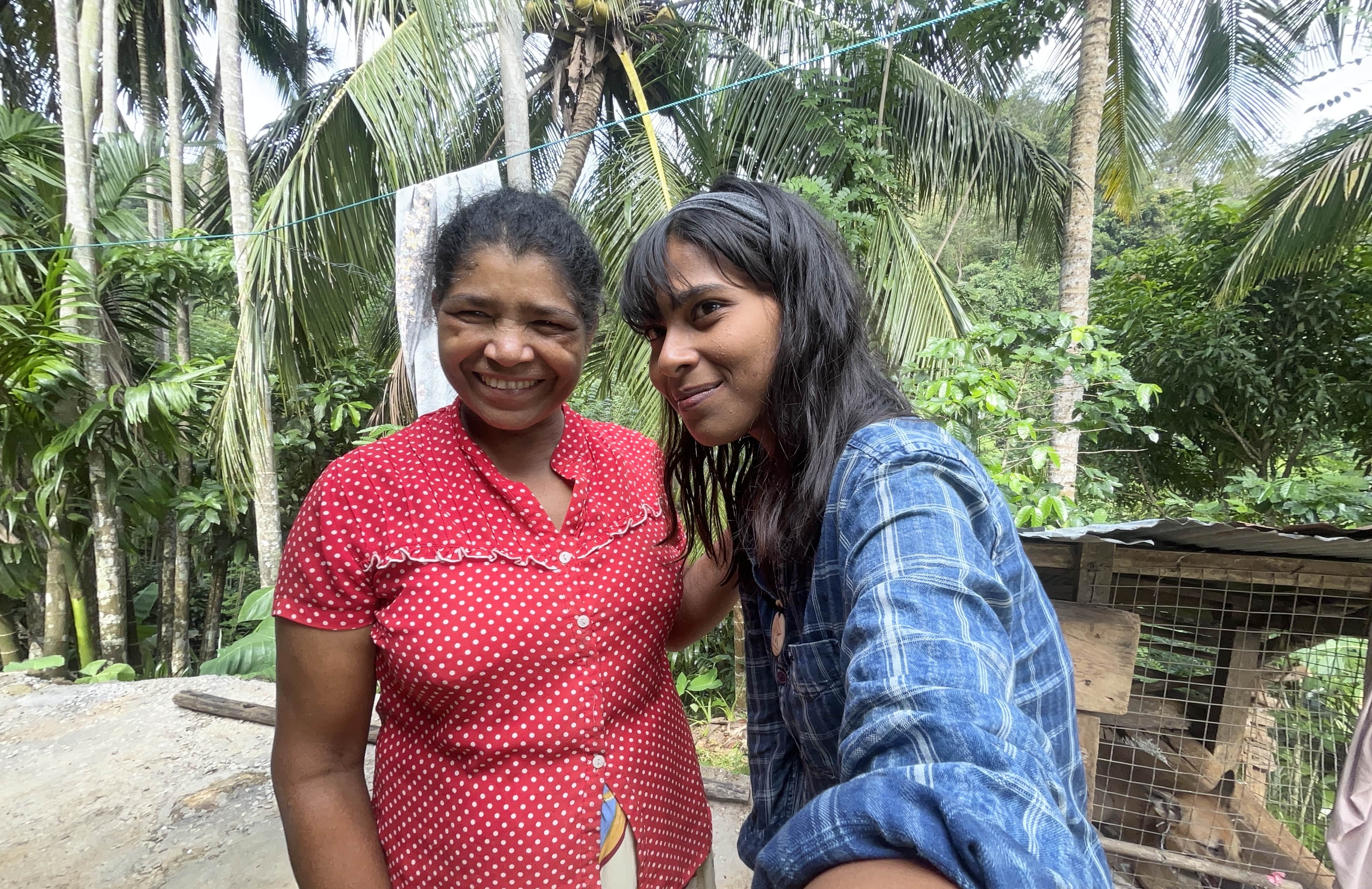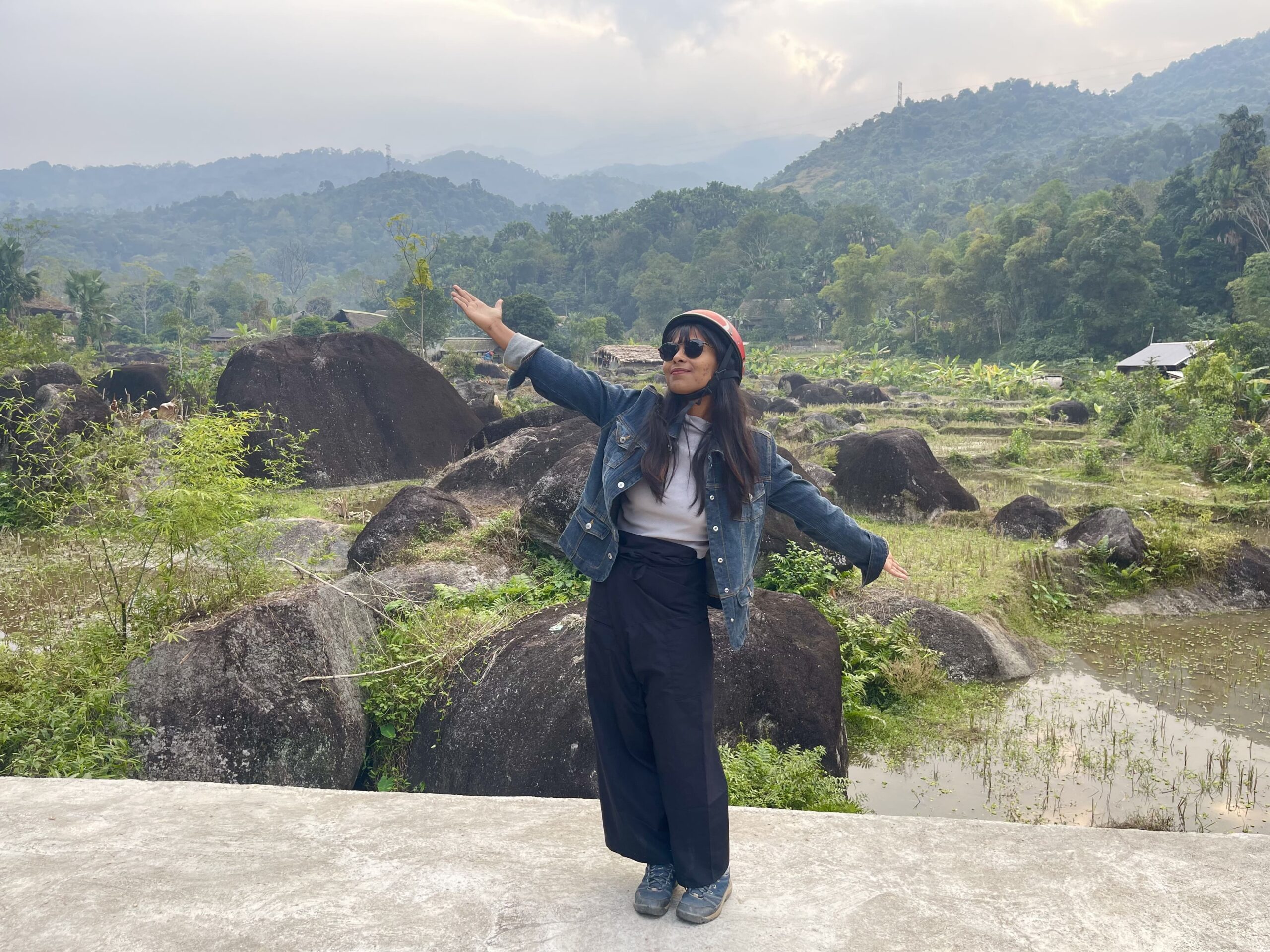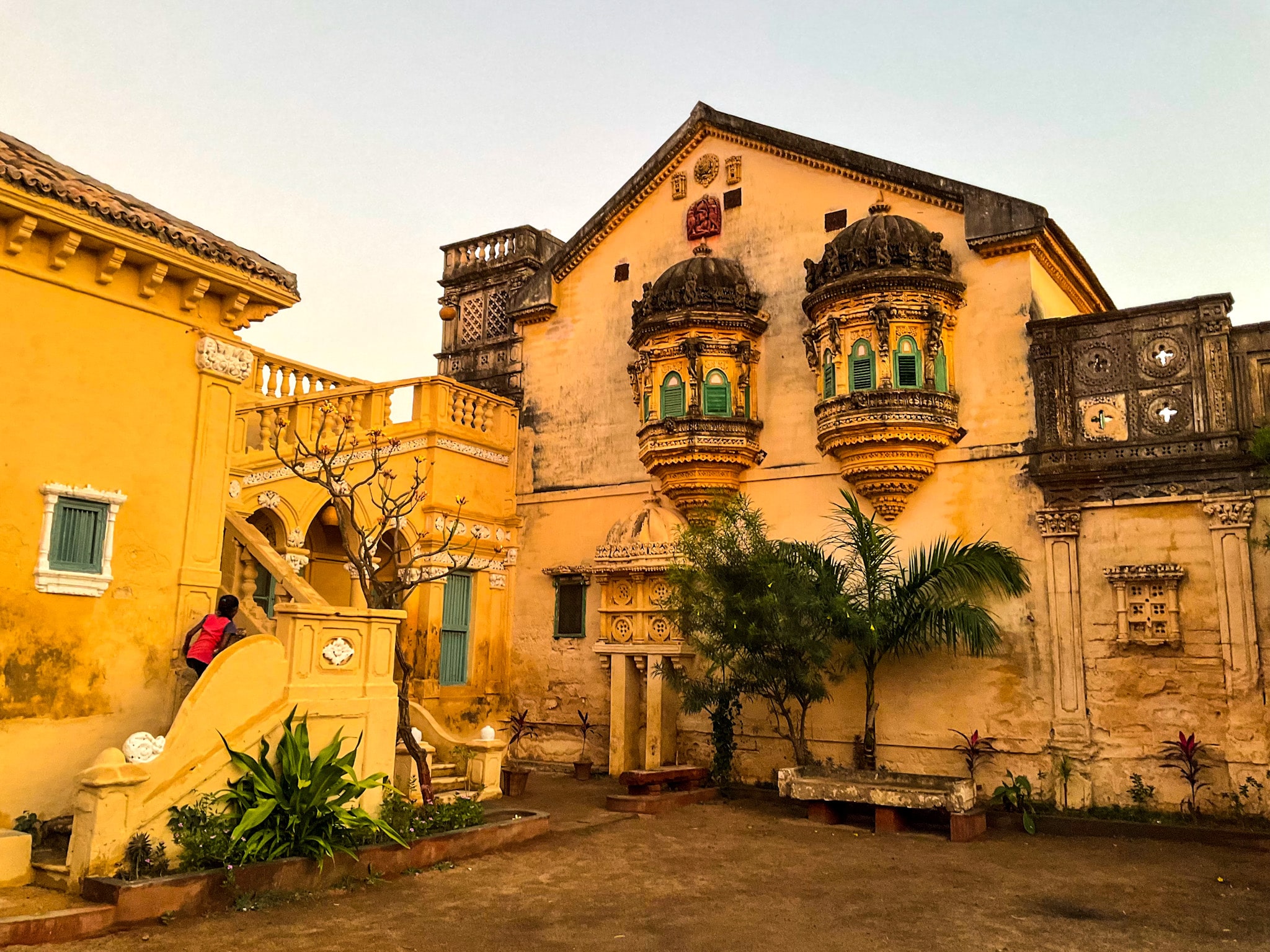The yellow deserts and hidden treasures, all that while drinking camel milk in a Rajasthani village conserving 400 camels.
Around 40 km away from Jaisalmer Rajasthan, Samvata is a tiny village of camels in a rather secluded corner. The village of 400 camels, preserved and reared by the camel men who have their camel-God as well. This is Jaisalmer, the yellow reign of variations, and golden landscapes.
How did I reach this place? The primary reason was to taste camel milk, but it turned out to be much more than that! On my very first day in Jaisalmer, I was hijacked on the road by a certain ‘camel man’ to have Rajasthani food at his newly-open restaurant. He worked with camels for seven years. His stories and the intimate knowledge of camels presented camel-opportunities for me; a curious alleyway to experience this yellow-kingdom of Rajasthan. A few days later, we were off to know this land.
“The camels are on the brink of extinction. Very few people rear camels since it’s quite a laborious task. There’s no use of camels in daily life, we have vehicles now”, informed a local man born and brought up in the desert. He has moved on to the tourism-cum-commercial restaurant business in central Jaisalmer. There’s no demand for camels.
Camel milk is thick, tastes heavy as if sprinkled with mild salt, and generates a lot of heat! Even the tea tasted very salty, but salt could not be unraveled. Camel milk is a huge contributor to the nomads of the desert.
Also read – 15 Best Places to Visit in Jaipur for A Pink Getaway

But Sumer Singh Bhati, the preserver and the caretaker of 400 camels, still holds firm onto the pillar of tradition in Jaisalmer Rajasthan. The 610-year-old Oran in this village has been facing extinction. Orans constitute a part of the breeding custom of the desert. Cutting trees is prohibited here, and cultivation of any kind is banned as well, for both religious and conservation reasons. The grove provides fodder and leaves for the camels. “Our ancestors used to keep camels, and so do we! 5000 camels from the nearby villages are dependent on this Oran. This is the only place in Hindustan where 5000 camels are kept within 20 km”, said Sumer Singh Ji.
This piece of land was donated by the king of Jaisalmer around 600 years ago. The copper plate on which the event took place is still preserved by the locals. Fighting the government and many corporates, they were able to restore around 23,000 bighas of land.
Adhering to the demands of the locals, The Rajasthan Camel Act 2015 passed a law that defamed the trading of camels across States. The Act condones one to five years of imprisonment and a fine of Rs 20,000. Trading of camels or transportation of camel meat across the borders had been prohibited in order to preserve the camels within the parameters of Rajasthan. But the law has backfired on the camel men. The collective claim was to impose a ban on the trading of female camels (known as shand) to elongate the camel-kingdom. However, the prevention of trading of both male and female camels has progressively plummeted the number of camels in aggregate. The gigantic marginal dip in the prices was a direct consequence of the lessened exposure to the trade-economy. And an increase in abandoned camels and illegal means of trade, of course.
Camels can live up to 40 years. A camel is prepared for mating by the time she hits her 4th year. Within a gap of 2 years, a female camel can give birth to another baby camel. Camels are one of the very few animals to mate in a sitting position, while the male mounts on the female from behind.
There generally is a leader for the caravan of camels around. One leader directs the rest with its movements and gathers everyone in a lurch. In Samvata Village, one dark-brown camel leads the way for 400. Long eyelashes, and lucid crystal eyes. They are brawny and beautiful. At the entrance of the village, a mother camel was pampering her baby black camel; and among the many many others, the camels were busy munching kyari.
Some of their front legs are tied by a rope on both ends to prevent faraway wanderings. Their bodies are marked by a communal sign on their backsides. The village men prefer not to go to the desert and reside nearby with their camels and families.
– “How difficult is it to handle 400 Camels?” I asked Sumer Singh Ji.
– “We live in the animal kingdom. Camels, cows, sheep, goats – they all are parts of the family. Ghee, yogurt, milk, butter – we consume everything in the beauty of nature. People in the big cities crave it, and we make the best out of it.”
-“What do you do when a camel dies?” I asked him with the glass of camel milk in my hand. The milk was served in a half-cut plastic bottle.
The dead camels don’t get any funeral. They rest in their fallen place until the vultures finish them off in two days.
With the additional scarcity of grazing land, the Act has now proved to be another driver of the prevailing camel abandonment. Every year for 2 months, the camel men used to bring their camels to Kumbhalgarh Forest for grazing. But ever since Kumbhalgarh has been proclaimed as a wildlife sanctuary, native camel men have lost their access. The government scheme providing a subsidy of Rs. 10,000 (in three installations) for every newborn camel has failed to provide for the last installation.
Also read – Girls Get Married at the Age of Nine in Rajasthan

As an alternative to the camel-trading tradition, the camel men, quite unwillingly, are trying to digress their course of business to selling camel milk. Not widely accepted in a whole spectrum yet, camel milk is being sold at Rs. 60 per liter against the consensus of the camel breeders. Camels are sacred to the breeders. Even men here don’t pee standing, since it resembles that of a camel.
“The camels are on the brink of extinction. Very few people rear camels since it’s quite a laborious task. There’s no use of camels in daily life, we have vehicles now”.
Talab, the man of the desert, told me a story from his adolescence. Once his father beat the bum out of him, having caught him in the act of ‘standing and peeing’. The mirror revealed the red pockmarks delineated evenly on his bum. And from that day onwards, he never even imagined trying it out or using a Western washroom.
The locals believe that there exists no disease that cannot be cured by camel milk. The man with camel eyes whose face radiated orange heat in sunset strongly agreed on the ubiquitous power of the milk. It has been recorded by many medical foundations that camel milk is beneficial for diabetes, liver disease, autism, and cancer. But the caution is not to drink it raw and unheated. Yogurt is easily made using camel milk but it is so much harder to produce butter. Camel soap and camel milk ice cream are apparently now the by-products.
Camel milk contains 3% fat, even though it varies depending upon many factors and regions. Low levels of sugar and cholesterol, and high levels of vitamins and minerals, such as iron, magnesium, potassium, and calcium. But it should be pasteurized before consumption; otherwise, you run the risk of contracting diseases.
Camel milk is thick, tastes heavy as if sprinkled with mild salt, and generates a lot of heat! Even the tea tasted very salty, but salt could not be unraveled. Camel milk is a huge contributor to the nomads of the desert as it can solely take care of their gastronomic needs. There is no need to eat anything else throughout the day.
With the new generation emerging, the culture is slowly dissolving. Sumer Singh Ji and many others in Rajasthan are the bearers of conservation the next generation may or may not live to see.
Have you ever tried camel milk in Rajasthan?
Support my solo adventures around the globe by joining the Patreon community!
Live the Adventure
Get weekly articles delivered to your doorstep and stay up-to-date with my new travel stories.





Leave a Reply